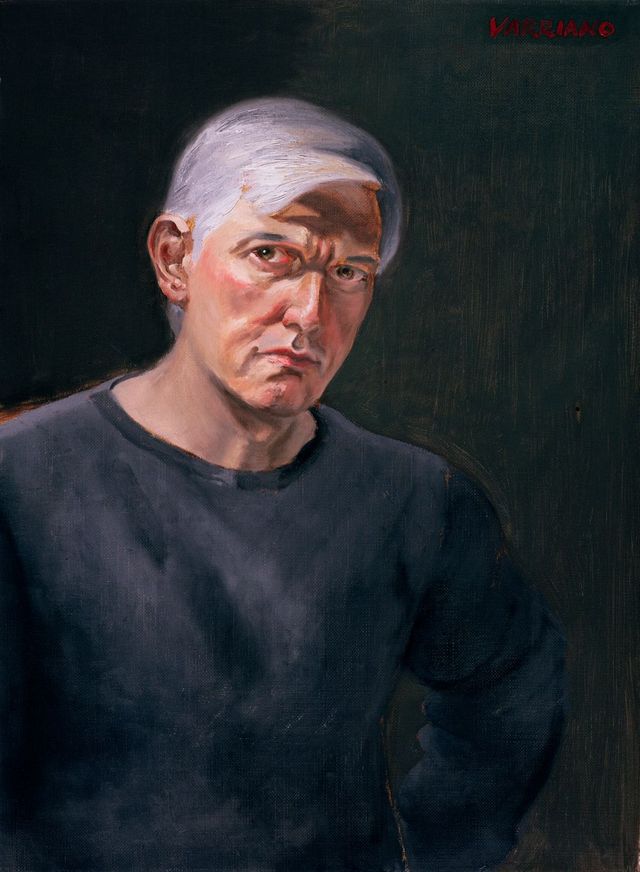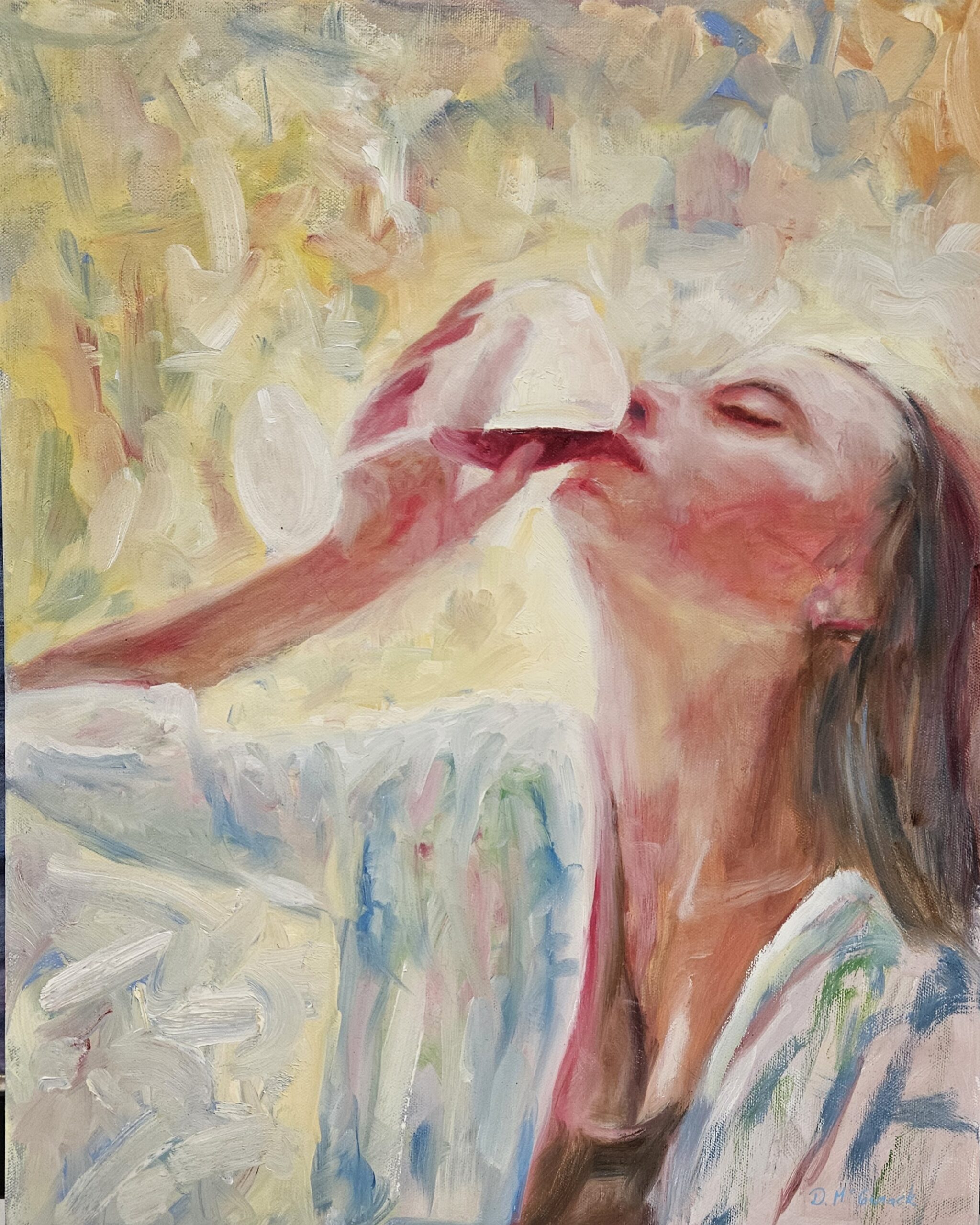Unveiling the Tricks Behind Expressive Figurative Oil Painting Styles
Wiki Article
The Evolution of Metaphorical Oil Painting: Comprehending Its Historical Importance and Modern Interpretations
The advancement of metaphorical oil painting offers as a compelling lens with which to examine the interaction between artistic expression and historic context. Contemporary artists, attracting from this abundant heritage, are now reinterpreting the human number in means that test traditional narratives.Origins of Figurative Oil Painting
The beginnings of figurative oil painting can be mapped back to the very early Renaissance in Europe, especially in the 15th century. This duration noted a considerable separation from the flat depictions and inflexible types particular of middle ages art. Musicians began to discover naturalism, emphasizing the human number and its emotional expression. The growth of oil paint enabled higher deepness of shade and information, improving the realism and vibrancy of their job.
In this transformative era, numbers were commonly depicted within contextually abundant environments, showcasing not just their physical characteristics but also their mental states. Leaders such as Jan van Eyck and Titian used the medium's versatility, using layering techniques to achieve luminosity and texture. This advancement facilitated the portrayal of elaborate materials and the subtleties of skin tones, contributing to the growth of portrait and narrative scenes.
Furthermore, the Renaissance emphasis on humanism cultivated a gratitude for uniqueness, which subsequently affected musicians to produce more vibrant and relatable figures - figurative oil painting. As a result, figurative oil paint arised as a powerful automobile for storytelling and psychological involvement, laying the foundation for future imaginative movements and designs
Key Historic Movements
Substantial historic movements have actually shaped the development of metaphorical oil paint, each contributing unique viewpoints and techniques that expanded the medium's opportunities. The Renaissance marked a zero hour, highlighting realism and the human type, with musicians like Leonardo da Vinci and Michelangelo pushing the boundaries of anatomical precision and perspective. Following this, the Baroque era brought dramatic contrasts of light and darkness, exemplified by Caravaggio, that infused spiritual styles with extreme emotionality.The 19th century introduced Romanticism and Realistic look, where musicians such as Delacroix and Courbet challenged timeless perfects, focusing on individual expression and daily life. The arrival of Impressionism better changed the tool by emphasizing the effects of light and shade, causing a departure from conventional depiction.
In the early 20th century, movements like Expressionism and Cubism redefined figurative painting through abstraction and the expedition of psychological deepness. Each of these motions not only showed the social adjustments of their times however also laid the groundwork for contemporary analyses. The interplay in between these historic motions has actually developed a rich tapestry of philosophies and styles, influencing contemporary artists in their search of recording the human experience on canvas.
Techniques and Materials Advancement

Throughout the Baroque period, methods such as chiaroscuro and sfumato arised, improving the emotional vibration of metaphorical compositions. Artists began to try out glazes and impasto, controling texture and brightness. By the 19th century, innovations like the usage of pre-mixed paints in tubes changed accessibility, permitting musicians to paint en plein air and capture the short lived effects of light.
The 20th century witnessed the introduction of artificial pigments and mediums, which increased the combination and altered the uniformity of oil paints. Clicking Here In addition, the exploration of brand-new application methods, such as combination blades and brushes of differing rigidity, further diversified artistic expression. Jointly, these innovations reflect the progressing partnership in between products, techniques, and the imaginative vision intrinsic in metaphorical oil paint.

Contemporary Interpretations
Contemporary interpretations of figurative oil painting show a vibrant dialogue between tradition and technology, where musicians test developed standards and explore diverse motifs. This development shows up in numerous ways, as modern musicians mix classical methods with contemporary ideas, frequently addressing social, political, and personal stories.Many professionals attract ideas from historical works, yet they instill their pieces with modern viewpoints, making use of the human type as a lorry for discourse on sex, identity, and culture. Artists progressively explore abstraction, distortion, and multimedias, which permits for a wider interpretation of the number and its context.
Moreover, this contact form making use of brilliant shade combinations and unique make-ups usually offers to disrupt conventional seeing experiences, prompting crucial involvement from audiences. This change in emphasis expands beyond visual appeals; it shows an expanding understanding of the complexities of human experience in an interconnected globe.
As figurative oil painting continues to advance, it stays a vital tool for exploring the subtleties of contemporary life, embodying both a regard for heritage and a commitment to modern idea. The result is an abundant tapestry of expression that resonates with the complexities of the modern human condition.
Effect On Modern Art
The impact of metaphorical oil painting on contemporary art is extensive, as it has actually consistently inspired a myriad of artistic movements and techniques throughout the 21st and 20th centuries. From Expressionism to Surrealism and beyond, the exploration of the human figure has actually stayed a central style, enabling artists to convey intricate emotions and stories. This focus on metaphorical representation has actually caused a re-examination of conventional techniques, resulting in ingenious techniques that blend realism with abstraction.
Furthermore, contemporary musicians have embraced figurative oil paint as a way to deal with social and political problems, utilizing the tool to challenge assumptions of culture, identification, and sex. The rebirth of passion in figurative operate in current years shows a longing for link in a progressively digital globe, where human experience and feeling are paramount.
In addition, the discussion in between metaphorical oil paint and modern art appears in the jobs of musicians such as Kehinde Wiley and Jenny Saville, who make use of historical recommendations while instilling their items with modern importance. Eventually, figurative oil painting proceeds go to this web-site to shape and redefine modern imaginative expression, highlighting its enduring value in the art globe.
Verdict
The advancement of figurative oil paint emphasizes its historic significance and versatility across numerous imaginative movements. From the naturalism of the Renaissance to the stirring expressions of the Baroque and the ingenious techniques of modernity, this medium has constantly changed. Contemporary analyses reflect non-traditional structures and vivid shades, cultivating important involvement with political and social themes. Ultimately, figurative oil paint continues to be an important medium for exploring the human experience, resonating profoundly in today's digital landscape.The evolution of metaphorical oil painting serves as a compelling lens with which to examine the interplay between artistic expression and historic context.Considerable historic activities have formed the advancement of metaphorical oil painting, each adding unique viewpoints and techniques that increased the tool's opportunities.As historical motions formed the trajectory of figurative oil paint, the methods and materials employed by musicians have actually likewise gone through considerable makeovers. figurative oil painting.The influence of metaphorical oil painting on modern art is profound, as it has consistently influenced a myriad of imaginative motions and methods throughout the 21st and 20th centuries.The development of metaphorical oil painting emphasizes its historical importance and flexibility across numerous artistic activities
Report this wiki page